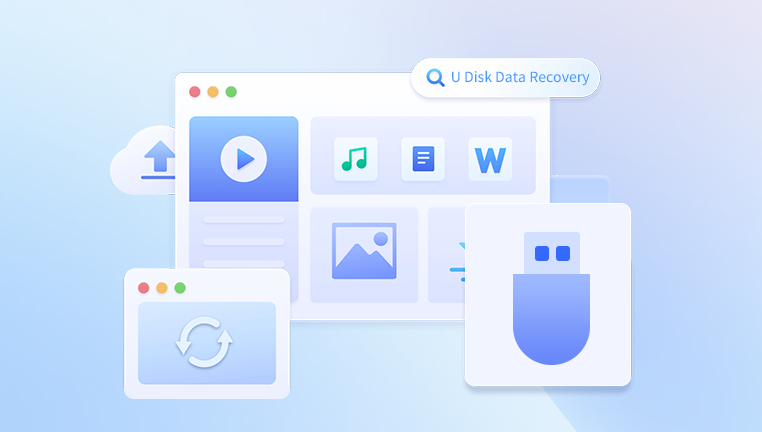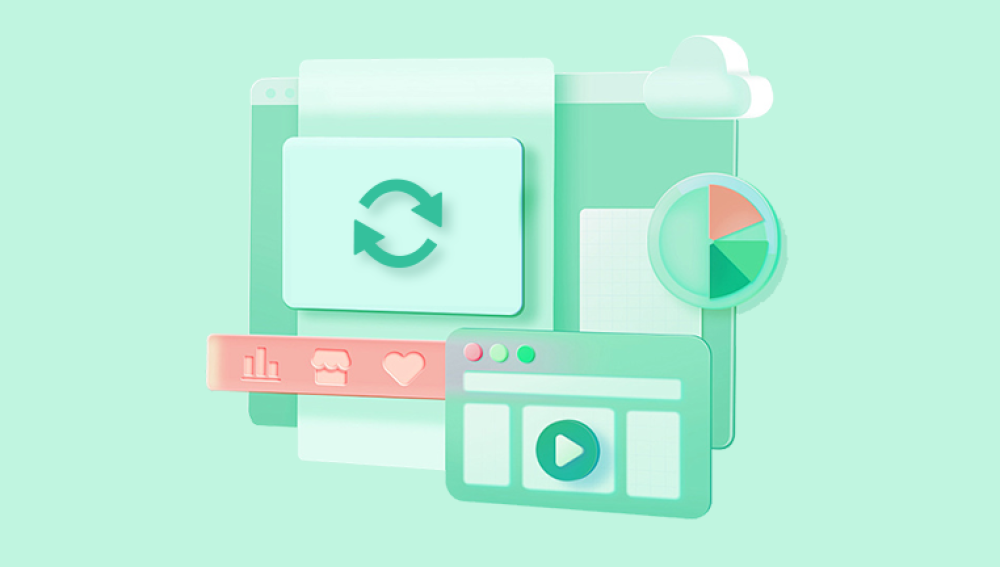USB flash drives have revolutionized the way we store, share, and transport data. Their portability, affordability, and compatibility with nearly every device have made them an indispensable part of our digital lives. From work presentations and school assignments to treasured photos and personal documents, USB drives are often entrusted with vital data. But what happens when that data suddenly disappears?
1. Accidental Deletion
Users often delete files thinking they’re removing unwanted content, only to realize later that they’ve deleted important documents or photos. Unlike a computer’s recycle bin, USB drives typically bypass the trash and permanently delete files.
2. Formatting
Sometimes users format their USB drive by mistake. Quick formatting erases file system records, making data appear gone even though it’s still physically present on the drive—at least until it’s overwritten.

3. Corruption
Unplugging a USB drive during a file transfer or system crash can corrupt its file system. When this happens, the operating system may no longer recognize the drive or may request a reformat.
4. Virus or Malware Attacks
Malware can hide, delete, or encrypt your files, leaving your flash drive empty or inaccessible. USB drives are commonly used to spread malicious programs, making them vulnerable.
5. File System Errors
File system errors occur when the structure that keeps track of files becomes damaged. This might happen due to improper ejection, power failure, or software glitches.
6. Physical Damage
Although rare, physical issues like a damaged USB port, broken connector, or chip failure can make data recovery extremely challenging without professional help.
How USB Flash Drive Recovery Works
When you delete a file or format your flash drive, the data doesn’t vanish instantly. The space the data occupied is marked as “free” but remains intact until new files overwrite it. Free recovery programs work by scanning this unallocated space for remnants of deleted files and reconstructing them using metadata.
There are two main types of scans:
Quick Scan: Searches recently deleted files and is typically fast and efficient.
Deep Scan: Digs through the entire drive to find traces of older or more fragmented files, especially useful after formatting or severe corruption.
Recovery success depends on how quickly you attempt recovery after data loss and how much the drive has been used since the incident.
Key Features to Look For in Free USB Recovery Software
Not all recovery tools are created equal. Some offer limited features, while others provide surprisingly comprehensive options for free. When choosing a USB recovery program, keep an eye out for these essential features:
Wide file type support: Should recover documents, images, videos, audio, archives, and more.
File preview: Lets you view files before recovery, helping ensure you recover the right ones.
Compatibility: Works on major operating systems and file systems (FAT32. exFAT, NTFS).
Scan modes: Offers both quick and deep scanning options.
Safe to use: Doesn’t overwrite or modify data during the recovery process.
No hidden charges: Truly free software should allow full file recovery without payment.
Top Free USB Flash Drive Recovery Programs
Below are some of the most trusted and effective free tools to recover files from USB flash drives.
1. Drecov Data Recovery
Overview:
Drecov Data Recovery is a user-friendly, lightweight tool that offers free recovery from USB drives and memory cards.
Key Features:
Supports all major file types and formats
Simple interface with a step-by-step recovery wizard
Quick and deep scan options
100% free with no recovery limit
Best For: Beginners looking for a no-cost, easy-to-navigate solution with robust recovery performance.
2. PhotoRec
Overview:
PhotoRec is an open-source recovery tool developed by CGSecurity. Despite its name, it recovers far more than photos.
Key Features:
Supports over 480 file extensions
Works on USB drives, SD cards, and internal hard drives
Deep scanning capabilities
Runs on Windows, macOS, and Linux
Best For: Advanced users who need a powerful, cross-platform tool and don’t mind using a text-based interface.
3. Recuva
Overview:
Recuva by Piriform is a well-known free file recovery tool with a straightforward interface and reliable performance.
Key Features:
Recovers files from USB drives, memory cards, and hard drives
Quick and deep scan modes
File preview and recovery wizard for beginners
Portable version available (no installation needed)
Best For: Users who need a quick, easy-to-use recovery tool for common scenarios like accidental deletion or minor corruption.
4. Disk Drill (Free Version)
Overview:
Disk Drill is a polished, professional-grade recovery tool with limited free recovery on Windows.
Key Features:
Up to 500 MB free recovery (Windows)
Attractive interface and file preview
Works on FAT32. NTFS, exFAT drives
Advanced filtering and scanning options
Best For: Users with a small amount of data to recover who prefer a sleek, modern interface.
5. EaseUS Data Recovery Wizard (Free Version)
Overview:
EaseUS offers a highly reliable recovery tool with a generous free tier and excellent deep scan performance.
Key Features:
Recovers up to 2 GB of data for free
File preview before recovery
Recovers from deleted partitions, formatted drives, and corrupted USBs
Guided recovery process
Best For: Users recovering moderately large files who want a polished and intuitive interface.
6. Windows File Recovery Tool (Microsoft)
Overview:
This command-line utility from Microsoft is free for Windows 10 and later.
Key Features:
Recovers files using signature-based search
Supports NTFS, FAT, exFAT, and ReFS
Safe and fast for tech-savvy users
Best For: Advanced Windows users comfortable with command-line tools.
Step-by-Step: How to Recover Files from a USB Flash Drive for Free
Let’s break down the recovery process into simple, actionable steps:
Step 1: Stop Using the USB Drive
Immediately unplug the USB drive and do not copy or save anything to it. The more you use it, the higher the chance that new data will overwrite the deleted files.
Step 2: Choose a Recovery Program
Download a free tool like Drecov Data Recovery, Recuva, or PhotoRec. Install it on your computer—not on the USB drive you’re trying to recover from.
Step 3: Connect Your USB Flash Drive
Insert the USB drive into your computer. Wait until it’s recognized and assigned a drive letter.
Step 4: Launch the Recovery Tool
Open the software and select your USB flash drive from the list of storage devices. Choose between a quick scan (for recently deleted files) or deep scan (for formatted or corrupted drives).
Step 5: Scan the Drive
Let the scan run. This may take a few minutes to an hour, depending on the size of your drive and the scan type.
Step 6: Preview and Select Files
After the scan, browse the list of recoverable files. Use the preview option (if available) to verify the contents of files before recovery.
Step 7: Recover and Save
Choose the files you want to restore and save them to a different drive—ideally your computer’s internal storage or another external drive.
Step 8: Back Up Your Files
Once you’ve recovered your files, back them up to multiple locations (cloud, external drive, etc.) to prevent future loss.
Tips to Improve Recovery Success
To maximize the chances of a successful USB flash drive recovery:
Act fast. The sooner you attempt recovery, the better.
Don’t write new data to the USB drive.
Use deep scan for formatted or corrupted drives.
Try more than one recovery tool if needed.
Be patient—deep scans take time but often yield better results.
How to Prevent Future USB Flash Drive Data Loss
While recovery is possible, prevention is ideal. Here’s how to protect your data:
1. Eject Properly
Always use the “Safely Remove Hardware” option to eject USB drives. This reduces the risk of file system corruption.
2. Back Up Regularly
Use cloud storage or external hard drives to back up your data routinely. Never keep your only copy on a USB drive.
3. Avoid Malware
Scan USB drives for viruses before opening them, especially if they were used on a public or unfamiliar computer.
4. Use Quality USB Drives
Invest in well-known brands. Cheap or counterfeit drives are more likely to fail.
5. Avoid Physical Damage
Keep USB drives away from extreme temperatures, moisture, and rough handling.
6. Don’t Overfill the Drive
Keep some space free on your USB drive to maintain performance and stability.




